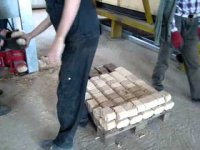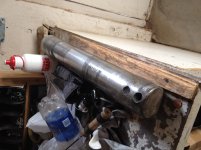roadhunter
Elite Member
I buy lumber from a local sawmill and have become pretty good friends with the family who owns it. They were showing me their waste piles of sawdust and it got me into thinking about making pellets. I did some research and found that there were many variables into getting a solid pellet and the material needed to be pretty clean. The more research I did the more I pictured myself being frustrated getting the material right, moisture right, press operating, temperature right, etc...
I continued to look into ways to utilize sawdust and chips and ran across biomass logs made from sawdust and used like typical firewood. Appears to be more forgiving as fars as the material can have some larger chunks and even chips can be used. I see a couple of manufacturers in Europe and 1 from China but I really can't seem to find where anyone has tried to build their own press. I keep picturing a log splitter with a hopper on top. Hydraulic cylinder going back and forth cramming sawdust in a piece of pipe with each stroke.
This model looks pretty basic
Biomass BP-100 Automatic Hydraulic Briquette Press | Hermance
Pic of finished product

Any thoughts on how one would go about building a contraption to do this in a simple manner?
I continued to look into ways to utilize sawdust and chips and ran across biomass logs made from sawdust and used like typical firewood. Appears to be more forgiving as fars as the material can have some larger chunks and even chips can be used. I see a couple of manufacturers in Europe and 1 from China but I really can't seem to find where anyone has tried to build their own press. I keep picturing a log splitter with a hopper on top. Hydraulic cylinder going back and forth cramming sawdust in a piece of pipe with each stroke.
This model looks pretty basic
Biomass BP-100 Automatic Hydraulic Briquette Press | Hermance
Pic of finished product

Any thoughts on how one would go about building a contraption to do this in a simple manner?

